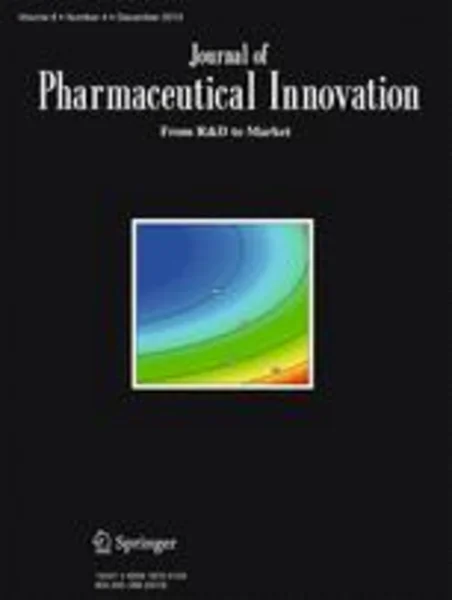-
latent variables-based process modeling of a continuous hydrogenation reaction in api synthesis of small molecules
جزئیات بیشتر مقاله- تاریخ ارائه: 1392/07/24
- تاریخ انتشار در تی پی بین: 1392/07/24
- تعداد بازدید: 973
- تعداد پرسش و پاسخ ها: 0
- شماره تماس دبیرخانه رویداد: -
introductioncontinuous manufacturing can be benefited by the use of the quality by design (qbd) strategy for robust process development and by the use of process analytical technology (pat) for real-time process monitoring and control. a successful implementation of qbd and pat for continuous processes relies on a robust and information-rich process model as a basis for process understanding, monitoring, and control. compared to first principles and other empirical models, a latent variables-based process model is capable of decomposing multidimensional process data into a few orthogonal latent variables and of providing accessible process understanding/visualization and control within the latent variable space. this study is an extension of our group’s earlier effort (liu et al., j pharm innov 6:170–180, 2011) to explore the utility of latent variables-based process modeling in pharmaceutical manufacturing processes.
methods
the case presented here is the first application of latent variables-based modeling to a reaction process in small-molecule active pharmaceutical ingredient route synthesis, i.e., a continuous-flow hydrogenation. a particular reactor configuration and operation was used in this proof-of-concept study.
results
it was found that time-variant profiles of pressure in the flow tube reactor served as an effective indicator of gas–liquid interaction within the reactor, thus determining process outcomes, i.e., the extent of reaction and enantiomeric excess (ee), given the importance of process set points. in addition, a design space of process parameters predicted to produce optimal outcomes, i.e., extent of reaction greater than 98 % and ee higher than 93 %, was established in order to provide a flexible operation space for performing the reaction with desired process outcomes.
conclusions
the capabilities of latent variables-based process modeling have been well demonstrated as applied to a continuous-flow hydrogenation reaction, regarding its improved process understanding and the potential for process optimization & control as well. future efforts will be focused on continuing understanding of the capabilities and limitations of such a methodology on a fully-automated control scheme for continuous flow reaction.
مقالات جدیدترین رویدادها
-
استفاده از تحلیل اهمیت-عملکرد در ارائه الگوی مدیریت خلاقیت سازمانی و ارائه راهکار جهت بهبود
-
بررسی تاثیر ارزش وجوه نقد مازاد بر ساختار سرمایه شرکت های پذیرفته شده در بورس اوراق بهادار تهران
-
بررسی تأثیر سطح افشای ریسک بر قرارداد بدهی شرکت های پذیرفته شده در بورس اوراق بهادار تهران
-
بررسی تأثیر رتبه بندی اعتباری مبتنی بر مدل امتیاز بازار نوظهور بر نقد شوندگی سهام با تأکید بر خصوصی سازی شرکت ها
-
تأثیر آمیخته بازاریابی پوشاک ایرانی بر تصویر ذهنی مشتری پوشاک ایرانی (هاکوپیان)
-
بررسی اثر پارامترهای سطوح مشترک بر رفتار دیوارهای حایل سنگ چین با استفاده از روش اجزا منفصل
-
اثرات کوتاه و طولانی مدت عصاره پرسیاوشان روی هموگلوبین، هماتوکریت، حجم گلبول های قرمز، زمان پروترومبین و زمان ترومبوپلاستین
-
بررسی جهش هاى نادر ژن بتاگلوبین در شمال غرب کشور
-
simulation of polycrystal deformation with grain and grain boundary effects
-
determination of mechanical properties of soft tissue scaffolds by atomic force microscopy nanoindentation
مقالات جدیدترین ژورنال ها
-
مدیریت و بررسی افسردگی دانش آموزان دختر مقطع متوسطه دوم در دروان کرونا در شهرستان دزفول
-
مدیریت و بررسی خرد سیاسی در اندیشه ی فردوسی در ادب ایران
-
واکاوی و مدیریت توصیفی قلمدان(جاکلیدی)ضریح در موزه آستان قدس رضوی
-
بررسی تاثیر خلاقیت، دانش و انگیزه کارکنان بر پیشنهادات نوآورانه کارکنان ( مورد مطالعه: هتل های 3 و 4 ستاره استان کرمان)
-
بررسی تاثیر کیفیت سیستم های اطلاعاتی بر تصمیم گیری موفق در شرکتهای تولیدی استان اصفهان (مورد مطالعه: مدیران شرکتهای تولیدی استان اصفهان)
-
نقش حسابداری مدیریت استراتژیک در عملکرد سازمانی (مطالعه موردی : هتل های 5 ستاره شهر تهران)
-
طراحی الگوی سقف شیشه ای با رویکرد نظریه داده بنیاد
-
بررسی عوامل موثر مدل سازی فرآیندهای کسب و کار(bpm) در قالب چارچوب itil جهت ارتقای هوش تجاری (bi) در سازمان تامین اجتماعی تهران
-
نقش ویژگی های کمیته حسابرسی بر رابطه بین انطباق مالیاتی و هموارسازی سود
-
بررسی ارتباط بین ضعف کنترل های داخلی و همزمانی قیمت سهام در شرکت های پذیرفته شده در بورس اوراق بهادار تهران: تبیین نقش تعدیلگر ویژگی های هیئت مدیره




سوال خود را در مورد این مقاله مطرح نمایید :